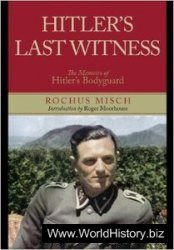Figure 1. Inherkhau greets his ba.
Figure 2. The akh [iqer] en re Panakht.
Figure 3. Rock-cut statues with unguent cones.
Figure 4. The shadow and the ba in the vicinity of the tomb.
Figure 5. The deceased seated before a ka-table.
Figure 6. The tomb owner holding a sekhem-sceptre and staff.
Figure 7. Bust of Ankhhaf, which was located in a mud-brick chapel attached to his tomb at Giza.
Figure 8. Inherkhau receiving mandrake fruit; an ankh hangs from his outstretched hand.
Figure 9. The figure of Nakhtamun rises above the scales of justification, holding the symbol of life in both hands.
Figure 10. Ptahhesy depicted as an akh iqer en re.
Figure 11. Statue of Sennuwy holding the stem of a water lily flower.
Figure 12. Headrest for the deceased, protected by serpent-spitting deities.
Figure 13. Diagram of cycles of dependency and reciprocity.
Figure 14. Stela of Ankhren with an appeal to the living.
Figure 15. ‘Breaking the red pots’ by a female mourner.
Figure 16. Statue, offering basin, and false door of Akhmeretnisut in situ in his mastaba. © Museum of Fine Arts, Boston.
Figure 17. Statues in (now enclosed) courtyard, with a stela and plinth for offerings.
Figure 18. Anthropoid or ‘ancestor’ bust in limestone.
Figure 19. Anthropoid or ‘ancestor’ bust in faience.
Figure 20. False door (right) with a yellow-painted central panel, built into a house wall.
Figure 21. The house of Djehutynefer as depicted in his tomb.
Figure 22. Lits clos in adjacent houses at Deir el-Medina.
Figure 23. Plan of the village of Deir el-Medina.© IFAO.
Figure 24. Pillar with a niche, probably for a stela or an ancestor bust.
Figure 25. Statuette of Mersu holding a water lily.
Figure 26. Sketch of a typical 18th Dynasty elite Theban tomb.
Figure 27. Profile and section of a typical elite 19th Dynasty Theban tomb.
Figure 28. The stela/offering table of Senpu: an example of the commemoration of several family members in a single monument.
Figure 29. The tomb owner (akh) drinks from the t-shaped basin in his courtyard while his ba hovers overhead.
Figure 30. Model of a tomb courtyard with the deceased emerging to receive offerings.
Figure 31. Opening of the Mouth and the resurrection of the dead.
Figure 32. Khaemhet greets the rising sun in the doorway of his tomb.
Figure 33. Sunk relief inscription on door jamb, highlighted with yellow paint.
Figure 34. Deities (Ipet and Hathor) possibly representing the chapels that Ani (whose tomb is also depicted) wished to continue visting after death.
Figure 35. Anubis (or a priest in a mask) tends to the mummy of Sennedjem in a canopied enclosure. Figure 36. The Opening of the Mouth ritual at the entrance to the tomb.
Figure 37. Diagram of a tomb courtyard showing the location of structures and participants.
Figure 38. Tomb courtyard with niches for stelae on either side of the doorway.
Figure 39. Female mourner in a grieving pose reminiscent of Isis.
Figure 40. A bereaved woman, dressed in typical grey mourning attire, weeps and throws dust into her hair while touching her husband’s coffin.
Figure 41. Banquet guests holding mandrake fruit and a water lily blossom.
Figure 42. Banquet scene in the tomb of Djeserkareseneb.
Figure 43. Guests and musicians in a scene from the tomb of Nebamun.
Figure 44. Part of the banquet scene in the tomb of Rekhmire. On the lowest register, the tomb owner’s deceased mother is served by a living attendant.
Figure 45. Banquet scene in the tomb of Userhet; the text mentions the Wadi Festival.
Figure 46. The bouquet of Amun.
Figure 47. Musicians and dancers from the tomb of Nebamun.
Figure 48. Banquet scene in the tomb of Nebamun and Ipuky.
Figure 49. Banquet and festival scenes in the tomb of Neferhotep.
Figure 50. Scene in the tomb of Tetiky that seems to show festivities in the tomb courtyard.
Figure 51. View from a house at Deir el-Medina towards the tomb chapels in the west.
Figure 52. View across the northern end of Deir el-Medina, the chapels (left), and the temple of Hathor (far left), towards the Theban necropolis and the east bank of the Nile.
Figure 53. View across the Theban necropolis towards Deir el-Medina and the path to the Valley of the Kings.
Figure 54. Deceased child (Taia, justified) beneath a chair in the burial chamber of Sennedjem’s tomb. Figure 55. Stela of May, depicting the tomb owner, his wife and a deceased child.
Table 1 Essential elements of the living and the dead.
Table 2 Evidence for cultic activity in New Kingdom houses.
Table 3 Lit clos decoration.
Table 4 New Kingdom tombs with sunk and raised relief. Based on own observations.
Disclaimer
Images are by the author unless otherwise stated. All reasonable attempts have been made to contact copyright holders where appropriate.




 World History
World History









